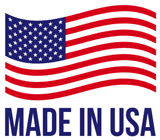You’re probably aware that drinking bottled water can have some benefits, but you may not know that it can also come with some downsides. One of the most common complaints about non-spring water is its lack of freshness.
That’s because many manufacturers use additives to make their bottles last longer on store shelves and in people’s homes. These additives can include things like fluoride, chlorine, bromide, phosphate and arsenic. The best solution is to drink directly from the tap or buy certified organic non-spring water.
If you’re curious about the ingredients used in your non-spring water bottles, read on to find out. The first thing many people notice when they look at the ingredients label on a bottle of non-spring water is that it’s not labeled as “spring water.”
In fact, manufacturers are required to list every ingredient they use on their labels. Some additives can be beneficial, while others may cause health problems or even death if ingested in large amounts over an extended period of time.
Fluoride
Fluoride is a man-made compound that’s added to drinking water to prevent tooth decay. It’s also used in other products such as toothpaste and mouthwash, but it’s most commonly found in non-spring water bottles.
While fluoride can be beneficial for adults when consumed in moderation (1 mg per day), children under 6 years old may have difficulty absorbing the chemical through their urine and gastrointestinal tract.
Additionally, some people have allergy or sensitivity issues with fluoride due to its interaction with bones or teeth—so if you’re concerned about your child’s health or want more information on how fluoride affects your body after drinking it, talk with your doctor before making any changes!
As far as avoiding non-spring water bottles altogether goes: there are many alternatives out there that don’t contain this ingredient at all—and if you’re looking for something that does have less than 2% total dissolved solids content per gallon (like tap water), then chances are good these options exist somewhere near where ever else lives nearby too 🙂
Phosphoric acid
Phosphoric acid is a mineral that can be found in many foods, and it’s also found in non-spring water. However, if you’re thinking of drinking this beverage because it contains phosphoric acid, there are some things you should know first:
- It’s not necessary to consume large amounts of phosphoric acid in order to gain health benefits. If you do consume too much, however—for example by drinking 8 glasses of non-spring water each day—you may experience negative side effects like nausea or diarrhea.
- It’s possible for individuals with certain medical conditions such as kidney failure or diabetes to have difficulty metabolizing this mineral into energy (they can only process about 1/3 as much per day).
Chlorine
Chlorine is an essential ingredient in non-spring water bottles. It’s added to the water to kill bacteria and make it safe to drink, but chlorine can also cause skin irritation, as well as being a carcinogen.
Chlorine is also used in many household cleaning products, including bleach—which you might have heard about because of its negative environmental impacts (see below).
Bromide
Bromide is a chemical compound used to retard the rate at which paper burns. It’s also used as an emulsifier, stabilizer, and surfactant in non-spring water bottles. Bromide has been shown to increase the lifespan of non-spring water bottles by up to 5 years!
Bromide can also be found in other products such as plastics and dyes that go into non-spring water bottles.
Sodium hexametaphosphate
Sodium hexametaphosphate is a chemical used to soften water. It’s used as an ingredient in non-spring water bottles, and it can also be found in foods like soft drinks and breakfast cereals.
This chemical has been linked to cancer, so if you plan on drinking any bottled non-spring water that contains sodium hexametaphosphate (aside from the obvious fact that it’s not spring), make sure the bottle says “non-carbonated” on the label—that way you’ll know exactly what kind of beverage you’re getting into!
Arsenic
Arsenic is a toxic element that can be found in water, and it’s even found in bottled water. The most common form of arsenic is inorganic arsenic, which is present at low levels in many types of non-spring waters.
Arsenic has been linked to health problems like cancer and heart disease. If you’re worried about your health after drinking non-spring water or if you have kids who drink it regularly, it’s important to know what kinds of ingredients are present in these bottles before buying them!
Aluminum
You might not think of aluminum as a health hazard, but it’s actually been shown to be toxic. The most common form of aluminum you’ll find in non-spring water is the metal itself, and this can cause Alzheimer’s disease, multiple sclerosis and cancer.
It also causes osteoporosis—a condition that weakens your bones over time—and it may increase your risk of cardiovascular disease by increasing blood pressure levels and reducing HDL (“good”) cholesterol levels.
Aluminum has already been linked to several other diseases including kidney problems like glaucoma or hypertension; other conditions include heart problems like atrial fibrillation or heart failure; lung issues like emphysema; digestive disorders such as irritable bowel syndrome (IBS); myelodysplastic syndrome (MDS), which affects bone marrow cells responsible for producing red blood cells; gallbladder issues such as cholecystitis; skin conditions such as psoriasis/eczema
Non-spring water can have harmful and non-helpful additives in the bottle.
When you’re looking for a bottle of non-spring water, there are some things you should know about the ingredients. While most people think that there are only two ingredients in their water bottles—water and carbonation—there are actually many more!
The reason why this is important is because certain additives can be harmful to your health, while others will not help it at all.
Just like with other types of food items or drink options, it’s important to read labels carefully before buying anything new. This way, you’ll avoid accidentally consuming something dangerous or unhealthy by accident!
Conclusion
If you’re in the market for a water bottle, you may be surprised to discover that most of the bottles on store shelves contain ingredients that are not good for your health. This is why it’s important to avoid non-spring water as much as possible because it can contain harmful chemicals such as bromide and sodium hexametaphosphate which can lead to serious health problems if consumed regularly.






